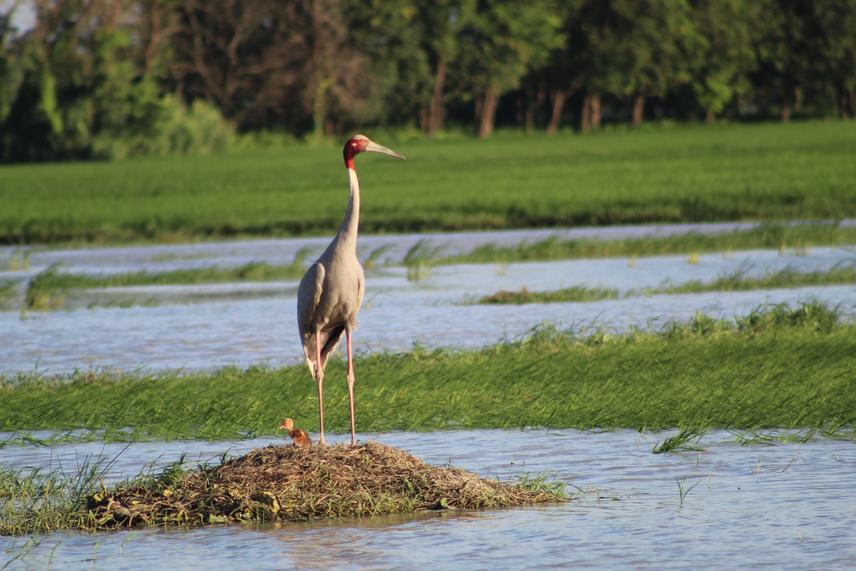Rojina Ghimire
The Sarus Crane, an emblematic farmland bird, faces threats from habitat encroachment, agricultural land degradation, overgrazing, industrial pollution, and direct human interference such as egg collection, hunting of juveniles, and nest destruction. These issues are intensified by insufficient community awareness, exacerbating the species' vulnerability.

Breeding sarus crane in the agricultural landscape of Lumbini farmland. ©Saraswati Thapa.
A recent survey recorded a population of 382 individuals in Rupandehi district, with seven significant roosting sites identified, highlighting the region's critical importance for the species. However, agricultural landscapes, essential for the crane’s nesting and foraging, are fraught with harmful practices such as pesticide use, nest damage, and juvenile killings, making conservation efforts urgent and necessary.
To safeguard this threatened species, a community-centric conservation approach is imperative. Local farmers, being the primary stewards of nesting and roosting sites, play a pivotal role in preserving these habitats. Conservation strategies emphasize community sensitization to raise awareness about sustainable agricultural practices and habitat protection, while specific campaigns targeting children aim to mitigate egg theft and juvenile hunting. Additionally, empowering locals as citizen scientists with adequate training and resources is essential for long-term monitoring and protection of the species. Promoting ethical birding and photography practices further minimizes human-induced disturbances.
The main aims of the project are: 1. To engage and sensitize relevant stakeholders and initiate conservation interventions and 2. To capacitate locals as citizen scientists for long-term conservation. By addressing human-induced threats and fostering collaborative efforts with local authorities and stakeholders, the project aims to create safer breeding grounds for the Sarus Crane. Community-driven conservation, coupled with habitat restoration and effective capacity building, holds the potential to secure the future of this iconic species within Nepal’s agricultural landscapes.